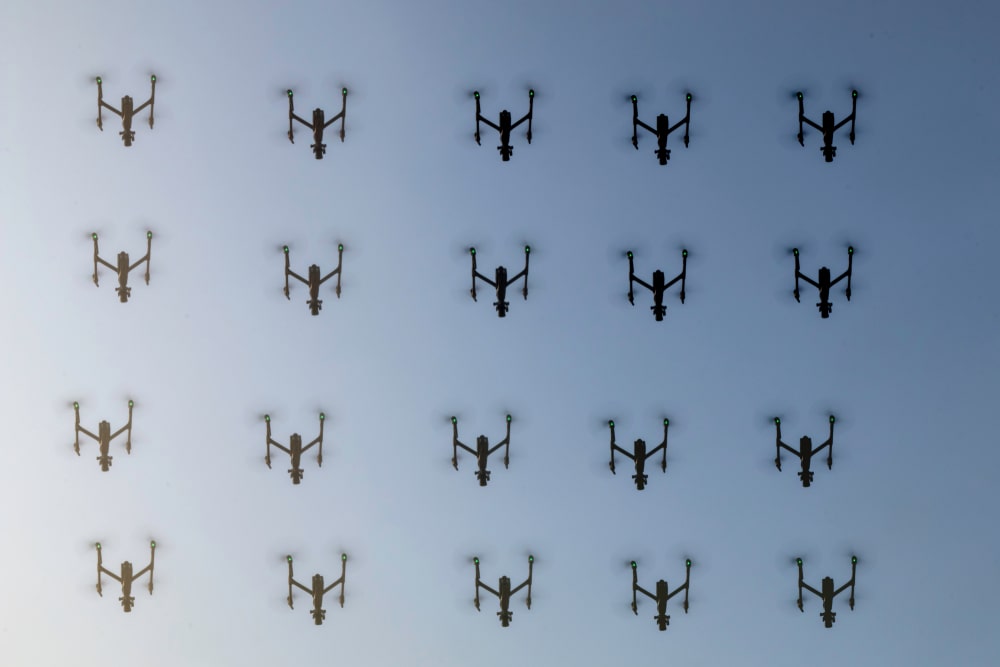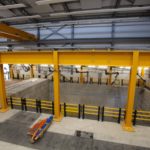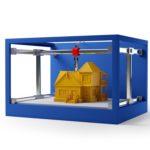News - Construction News
Understanding swarm robotics applications in construction

A British company recently revealed the world’s first entirely robot-constructed tunnel, sparking interest in the application of swarm robotics in the construction sector. Swarm robotics is essentially a group of robots that work together to complete a task autonomously, communicating with each other as they do so and coordinating efforts to achieve a common goal or masterplan.
Currently, swarm robotics is still at the development stage – with most innovation taking place within universities and laboratories across the world. However, hyperTunnel’s real-world application of the technology to create a complicated underground structure has raised questions about how far robotics could go in de-risking future construction projects and other high-risk activities.
Typically, tunnel building is a highly expensive and dangerous activity for those involved. Incorporating swarm robotics removes the element of danger for construction workers, and the robots’ powers of spatial organisation and navigation, combined with their ability to make collective decisions, removes the need for humans to enter hazardous situations.
From tunnel building to constructing dams, deploying swarm robotics could bring extra flexibility, while minimising risk to human life. It could enable the creation of new solutions, as the robots may be able to create structures that are seen as conventionally difficult to construct by humans. However, cost remains the main barrier to the widespread use of swarm robotics, and this is largely due to the expense of sensors, motors, and processing software.
Another challenge facing the widespread adoption of swarm robotics is that the technology is still very early stage, which means it has not yet been perfected. Notably, there are still issues with ensuring reliable and secure communication within swarms. While this is something that could potentially be fixed by connecting robots using 5G communications technology or through peer-to-peer communication between the robots, if the connection is lost due to an outage, the swarm could face issues such as crashes and malfunctions, which may hinder projects and further increase costs.
Currently, the control algorithm used by the swarm is unique to each application. This means that each specific application would need to be uniquely coded; from building a wall to mapping pipeline leaks. This is not ideal when working in real-world situations as it means that robots are not able to automatically switch from one task to another, and to get them to do so could incur cost and time delays.
As it stands, the hyperTunnel is an important project as it is possibly the first commercial application of swarm robotics. However, it is likely that within years to come there will be further advancements in this field, creating a challenge for innovators to protect their intellectual property.
With any groundbreaking and revolutionary technology, it’s important to identify all potential markets at the outset, when preparing a patent application, and then identify which offer the most commercial opportunities. Every potential market should be considered carefully, as a lack of ambitious thinking could mean that innovations attract the attention of copy-cat engineers operating in certain sectors or territories. Interestingly, when building larger machines, it’s also important to consider where specialist manufacturers may be located. While swarm robotics may generally use off-the-shelf parts, it is wise to consider manufacturing locations to secure commercial protection in these areas too.
While the potential for swarm robotics is still evolving and is not yet fully understood, the hyperTunnel project is a significant step forward, demonstrating its capabilities in a real-world, commercial application. It may well take time for consumers and construction companies to trust the use of robots in important areas, such as construction. For most construction projects, deciding whether to deploy swarm robotics will most likely come down to cost, but for those that are prepared to lead the way, patents are bound to play an important part in protecting key technologies that could significantly change the industry in the future.
Mark Sugden is a patent attorney at European intellectual property firm, Withers & Rogers. He specialises in advising innovators in the construction sector. Chris Froud is a partner and patent attorney at Withers & Rogers and specialises in robotics.
If you would like to read more stories like this, then please click here
Related Articles
More News
- £8Bn to be invested in flood defences over the next decade
27 Jun 25
A record £7.9Bn over ten years has been committed to flood defences.
- Boosting British jobs and skills key for firms to win major infrastructure projects
26 Jun 25
Creating high quality British jobs and boosting skills in local communities will be key requirements
- Major rail supply deal to protect thousands of British Steel jobs
25 Jun 25
Thousands of British manufacturing jobs have been secured as the Transport Secretary finalises a major






